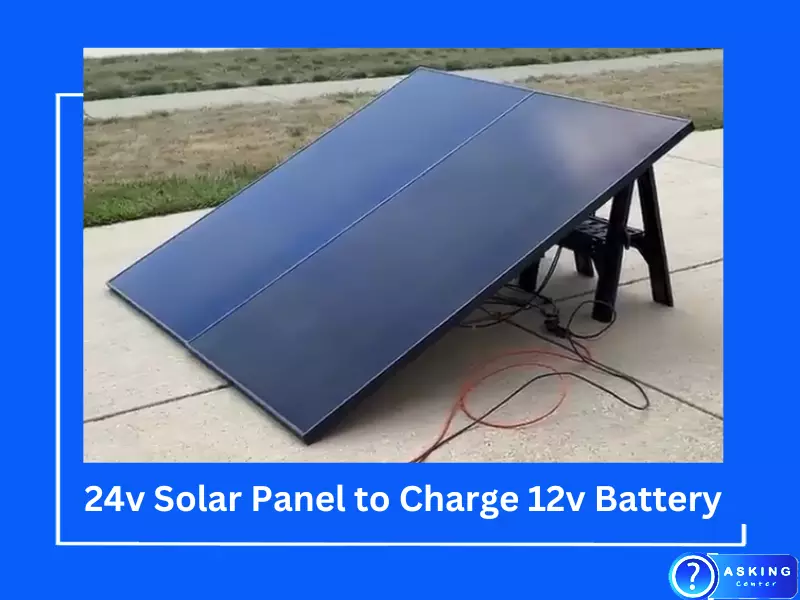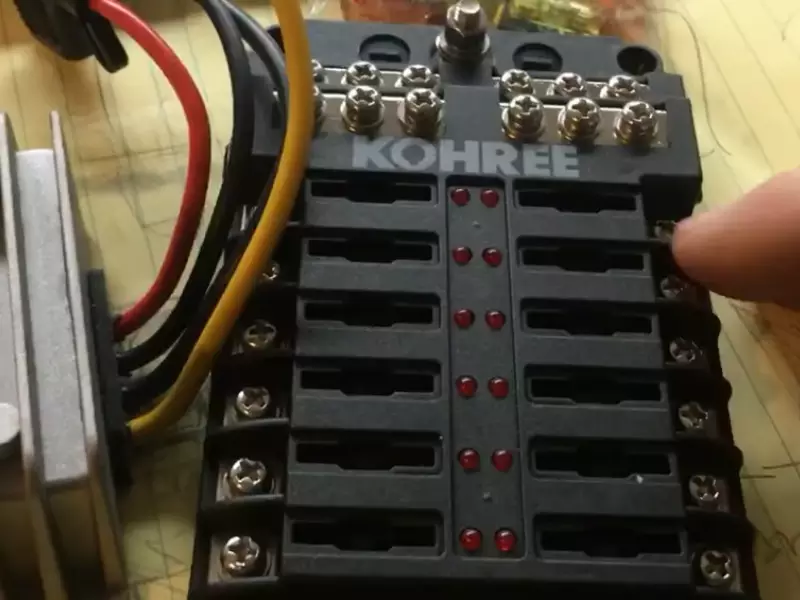Harnessing the power of the sun using solar panels is an excellent way to charge batteries, a sustainable solution that is growing in popularity. This method involves photovoltaic technology, which converts sunlight into electricity, a viable and renewable energy source. Using a 24v solar panel to charge a 12v battery, for instance, offers several advantages such as increased efficiency and longer lifespan.
Our focus is on how to optimize the use of a 24v solar panel to efficiently charge a 12v battery. You will learn the intricate process of connecting a solar panel to a battery or controller and discern between different controller types and their functions.
Prepare to gain a comprehensive understanding of this project. Learn from practical examples and real-world applications to ensure your solar power endeavor is successful and safe. This journey will pave the way for a greener future while granting you the satisfaction of utilizing renewable energy.
Understanding Solar Panel Basics
How Solar Panels Work
Solar panels are composed of photovoltaic cells that convert sunlight into electricity. This process is known as the photovoltaic effect. When sunlight strikes the cells, it excites electrons, causing them to move and create an electric current.

24v vs 12v Solar Panels
A 24v solar panel generally produces a higher voltage output compared to a 12v panel. Using a 24v solar panel to charge a 12v battery system involves converting the higher voltage into a format that the 12v battery can handle.
Advantages of Using a 24v Solar Panel to Charge a 12v Battery
Using a 24v solar panel to charge a 12v battery has several advantages. Firstly, it’s more efficient as it can keep the battery charged at a higher voltage and the system losses are less. Secondly, it allows the use of smaller wires, saving cost and making the installation easier.
How to Connect a Solar Panel to a Battery or a Controller
Connecting a solar panel to a battery or a controller is crucial for transferring the energy generated by the solar panel into usable power for your battery. The process may seem complex, but by following the steps outlined below, you’ll find it to be a straightforward task.
Identifying Your Components
Before you can begin, it’s essential to identify your solar panel, battery, and solar charge controller. The solar panel generates the energy, the battery stores this energy, and the charge controller ensures the battery isn’t overcharged, optimizing the energy transfer.
Connecting the Solar Panel to the Controller
- Ensure everything is off: Before starting, make sure all components are off to prevent any accidental short circuits.
- Wire the solar panel: The positive terminal of the solar panel (usually red) connects to the positive input of the controller, and the same applies for the negative terminal (usually black).
- Secure your connections: Double-check that all connections are secure to ensure efficient energy transfer.
Connecting the Controller to the Battery
- Prepare your battery: Identify the positive and negative terminals of your battery.
- Wire the controller to the battery: The positive output of the controller connects to the positive terminal of the battery, and the negative output connects to the battery’s negative terminal.
- Check the connections: Recheck the wiring and ensure all connections are secure and correct to prevent any damage or inefficiencies.

Different Types of Controllers
Solar charge controllers are an integral part of any solar power system. They regulate the energy flow from the solar panels to the batteries, preventing damage caused by overcharging. There are two main types:
PWM Controllers
Pulse Width Modulation (PWM) controllers are a more traditional style of controller. They work by slowly lowering the amount of power applied to the batteries as they approach full charge. This method reduces the risk of overcharging the battery and is most efficient when the solar panel and battery voltages closely match.
MPPT Controllers
Maximum Power Point Tracking (MPPT) controllers are the most sophisticated and efficient type of charge controllers. They adjust their input to harvest the maximum power from the solar panel and then transform this power to supply the varying voltage requirement of the battery plus load. This makes them ideal for larger systems and situations where the panel voltage is much higher than the battery voltage.
Bare Wire Connectors
When you don’t have access to snap-connectors, bare wire connectors provide a simple and effective solution. They are bare wires from the solar panel that need to be connected to the charge controller.
Preparing the Wires
Ensure the ends of the wires are stripped, exposing the conductor. Make sure not to strip too much wire as this could lead to a short circuit if the exposed parts touch.
Making the Connection
Attach the bare wire from the solar panel to the corresponding input on the charge controller. Positive goes to positive, and negative goes to negative.
Insulating the Connection
Once connected, the exposed part of the wire should be insulated with electrical tape or heat shrink to prevent accidental contact and potential short circuits.

Safety Considerations for Solar Panel Use
Working with solar panels and electricity requires safety precautions to prevent accidents and injuries.
Electrical Safety
Always ensure the solar system is turned off when working on it to prevent any electrical shock. Moreover, check the wiring and connections regularly to avoid short circuits or electrical fires.
Installation Safety
Solar panels must be securely installed to prevent them from falling or moving due to wind or other environmental factors. This is crucial for both the system’s efficiency and the safety of those around it. Ensure that the mounting structure is robust, and the panels are properly fastened.
Maintenance Safety
Proactive maintenance is key to keeping your system safe and efficient. Regularly inspect your panels for any dust or debris that could decrease their performance. However, when doing so, ensure not to touch the front surface of the panels under direct sunlight as they can get quite hot.
Essential Tips for a Successful Solar Power Project
Planning and implementing a solar power project involves several stages. These tips will help ensure your project’s success:
Choose the Right Equipment
Selecting the right solar panel, battery, and controller based on your power needs is crucial. A 24v solar panel is suitable for systems requiring higher power. The battery capacity should match your energy consumption, and the controller type (PWM or MPPT) should align with your system size and budget.
Maintain Your Equipment
Solar panels need regular cleaning to operate at maximum efficiency. Dirt and debris can block sunlight, decreasing power output. Check the wiring connections, as loose connections can cause energy loss.
Monitor System Performance
Keep track of your system’s performance to identify any potential issues early. Changes in energy output can be a sign of a problem with the panels, battery, or controller.
Frequently Asked Questions
Can I connect a 24v solar panel directly to a 12v battery?
Directly connecting a 24v solar panel to a 12v battery is not recommended. The higher voltage may overcharge and damage the battery. Using a solar charge controller between the panel and the battery ensures safe and efficient charging.
How does a solar charge controller work?
A solar charge controller regulates the energy flow from the solar panels to the battery. It prevents overcharging of the battery, which can reduce its lifespan and potentially be dangerous.
What are the differences between PWM and MPPT controllers?
PWM controllers are more straightforward and cheaper but less efficient. They work best when the solar panel and battery voltages match. MPPT controllers are more advanced, providing greater efficiency, especially in larger systems and situations with a significant voltage difference between the panel and battery.
Final Verdict
Harnessing solar power by efficiently using a 24v solar panel to charge a 12v battery is a worthwhile endeavor. With knowledge about solar panels, controllers, and safe connection methods, you can embark on this eco-friendly journey. Remember, safety is paramount.
Use the right equipment, follow the guidelines, and your renewable energy project will be both successful and fulfilling. With solar power, you contribute to a sustainable future while enjoying the benefits of self-sufficient energy.
